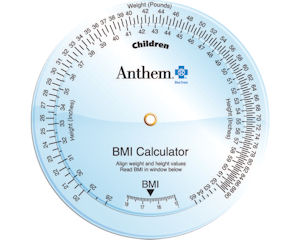Often, Dr. Elizabeth Evans is amazed. Some of her young patients eat fast food for dinner every night, wash it down with Coke or Gatorade, and have few chances to work off all the extra calories. Playgrounds in some of their neighborhoods are too dangerous and due to budget cutbacks, most get only a half hour of physical education a week. It is little wonder that one in three is overweight and one in five is obese. “I really worry for them,” said the pediatrician, who practices with Facey Medical Group in Northridge. “If we don’t stop it now, they are facing a lifetime of problems from heart disease to diabetes to stroke.” But Facey and Anthem Blue Cross are trying something new to stem the tide of childhood obesity, which has tripled in the last 30 years and led to a huge increase in the incidence of type 2 diabetes among children and adolescents. A new pilot being tried in the San Fernando Valley will give eligible children access to four free pediatrician visits every year plus four free visits with a dietician. They hope that the extra attention, counseling and education will make a difference. For now, the program is only available to 100 children ages 3 through 18 who have been found to be at or above the 85th body mass index percentile for their age. Three Facey pediatricians have been asked to identify and enroll the children in the pilot, a project of Anthem and the Alliance for a Healthier Generation, founded by the American Heart Association and the William J. Clinton Foundation. The program is part of the Healthier Generation Benefit, launched by the alliance in 2009 with some major employers and insurance plans. Some 2 million children nationally have access to the program, and the long-term goal is to eventually extend it to 6 million children—25 percent of all overweight and obese children. The Valley’s children are the first in California to get the benefit, which includes the eight free visits, a thorough check-up, a BMI screening, and lots of education and advice. Dr. Evans said she is already talking to her young patients and their parents about substituting milk and water for Gatorade, avoiding fast food, growing a garden for affordable fruits and vegetables and taking weekend hikes with the family. “The more the whole family works together, the more success we see,” she said. Anthem is making the visits free of all co-pays and other charges over the three years of the program. If it proves successful and results in a meaningful difference, the company may roll out the program statewide and perhaps nationally, though it has yet to decide if the visits would continue to be free. “If we find that the additional counseling makes a difference, it’s something we would invest in,” said Harvinder Sareen, clinical program director for Anthem, and the project leader on the pilot. Emory University will be tracking the program and compiling the results, which will eventually be published in a peer-reviewed journal, said Sareen. This is not the first Anthem initiative to combat childhood obesity. Its 2007-08 partnership with UCLA and LAUSD showed that salad bars inside schools could help improve the diets of school children, Sareen said. The company has also spearheaded a campaign to make primary care doctors conduct regular BMI screenings. Back in 2006, less than 5 percent of Anthem’s doctors conducted a BMI screening, Sareen said. Today, in some parts of California, that number is as high as 65 percent. These are small but important steps to combat a national epidemic of obesity, which is worse in the largely Hispanic communities in many parts of the Valley region. Forty-three percent of Hispanic children in California are either overweight or obese, according to the California Department of Health Care Services. It remains to be seen if more visits will actually help curb these staggering statistics. Sareen said that enrolling children in the program has actually been harder than expected. Since launching in late March, only 18 to 20 children have enrolled, she said. With parents who work at all hours — and often at night and on weekends — getting children to eight visits a year is no small matter, even if the visits are free. Sareen said the insurance company will study and tweak the program as it unfolds to make sure that all who qualify take advantage of it. “We expect more enrollment,” she said. “But one of the things we want to understand better is the barriers to enrollment.” Still, Anthem deserves credit for bringing the Healthier Generation Benefit to the San Fernando Valley, and we hope that with time, Anthem will make the program available to all children who could benefit from it. It’s something every insurance company should explore. It’s not just a good cause. If we don’t want to bankrupt the health care system, it’s a critical investment.
